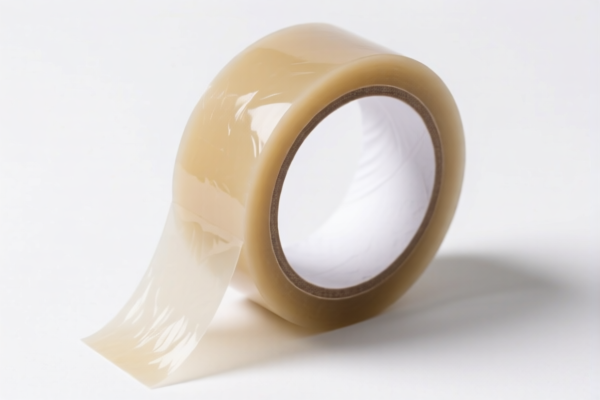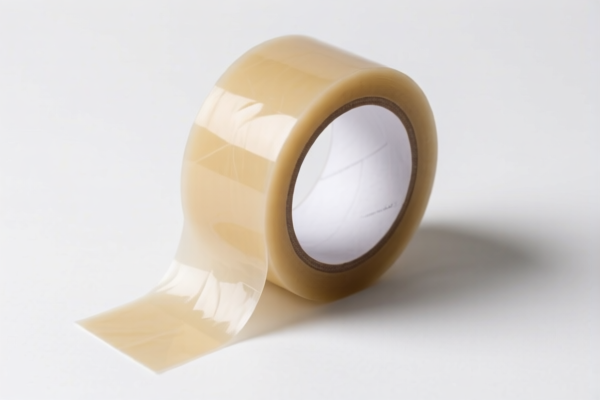| HS Code | Official Doc | Tariff Rate | Origin | Destination | Effective Date |
|---|---|---|---|---|---|
| 3919102055 | Doc | 60.8% | CN | US | 2025-05-12 |
| 3919905060 | Doc | 60.8% | CN | US | 2025-05-12 |
| 3923500000 | Doc | 60.3% | CN | US | 2025-05-12 |
| 3923900080 | Doc | 58.0% | CN | US | 2025-05-12 |
| 4823906000 | Doc | 55.0% | CN | US | 2025-05-12 |
| 4823907000 | Doc | 55.0% | CN | US | 2025-05-12 |
| 4821904000 | Doc | 55.0% | CN | US | 2025-05-12 |
| 4821902000 | Doc | 55.0% | CN | US | 2025-05-12 |




Autoclave Tape
Autoclave tape, also known as sterilization indicator tape, is a pressure-sensitive adhesive tape used to indicate whether items have been subjected to the sterilization process within an autoclave. It serves as a visual confirmation of exposure to the required sterilization conditions, though it does not guarantee sterility.
Material:
Typically composed of a paper or polyimide film backing coated with a heat-sensitive indicator dye. The dye changes color when exposed to specific temperature and pressure parameters commonly found during autoclave cycles. Common dye compositions include those that transition from white to varying shades of black, purple, or other distinct colors.
Purpose:
The primary purpose of autoclave tape is to provide a quick, visual confirmation that items have been processed in an autoclave. It is used extensively in healthcare settings, laboratories, and other environments requiring sterilization of equipment and materials. It is not a substitute for biological indicators, which directly assess microbial inactivation.
Function:
The tape functions based on the principle of heat activation. When exposed to sufficient steam, temperature, and duration within an autoclave, the heat-sensitive dye undergoes a chemical change, resulting in a visible color change. This change indicates that the item was likely exposed to sterilization conditions. The specific temperature and time required for color change vary depending on the tape's formulation.
Usage Scenarios:
- Wrapping Instruments: Used to seal pouches and wrap instruments before autoclaving.
- Sealing Containers: Securing lids on containers holding items for sterilization.
- Identifying Sterilized Items: Marking items that have undergone the sterilization process.
- Monitoring Sterilization Cycles: As part of a quality control process to verify autoclave performance.
- Laboratory Use: Sterilizing glassware, media, and other lab equipment.
Common Types:
- Multi-Parameter Indicator Tape: Changes color at multiple temperatures, providing a more comprehensive indication of sterilization conditions.
- Class 1 Chemical Indicator Tape: Changes color at a single temperature (typically 121°C or 134°C). Most common type.
- Steam Indicator Tape: Specifically designed for steam sterilization.
- Self-Indicating Tape: Some tapes incorporate a visual indicator that changes color immediately upon application, providing a visual confirmation of sealing before autoclaving.
- Wider Width Tapes: Available in wider widths for securing larger items or wrapping larger bundles.
Limitations:
- Does not guarantee sterility: The color change only indicates that the item reached a certain temperature and pressure, not that all microorganisms have been killed.
- False Positives: Color change can occur even without adequate sterilization if the item is exposed to sufficient heat for a short period.
- Interference: Some materials can interfere with the color change reaction.
- Storage: Proper storage conditions (cool, dry place) are necessary to maintain tape integrity.
Autoclave tape is a pressure-sensitive adhesive tape used for sterilization monitoring in autoclaves. It typically changes color when exposed to the high temperatures and steam used in the sterilization process, indicating whether the items have been adequately sterilized.
The following HS codes may be relevant, based on the provided information:
- 3919102055: Self-adhesive plates, sheets, film, foil, tape, strip and other flat shapes, of plastics, whether or not in rolls: In rolls of a width not exceeding 20 cm: Other Other. This code covers self-adhesive tapes made of plastics, and autoclave tape falls into this category. The total tax rate is 60.8% (5.8% base tariff + 25.0% additional tariff, increasing to 30% after April 2, 2025).
- 3919905060: Self-adhesive plates, sheets, film, foil, tape, strip and other flat shapes, of plastics, whether or not in rolls: Other: Other Other. This is a broader category for self-adhesive plastic products, and autoclave tape could be classified here if it doesn’t meet the specific width requirement of HS code 3919102055. The total tax rate is 60.8% (5.8% base tariff + 25.0% additional tariff, increasing to 30% after April 2, 2025).
- 4821902000: Paper and paperboard labels of all kinds, whether or not printed: Other: Self-adhesive. If the autoclave tape is paper-based and self-adhesive, this HS code may apply. The total tax rate is 55.0% (0.0% base tariff + 25.0% additional tariff, increasing to 30% after April 2, 2025).
- 4821904000: Paper and paperboard labels of all kinds, whether or not printed: Other: Other. This is a broader category for paper-based labels, and could apply if the tape is paper-based but not specifically self-adhesive. The total tax rate is 55.0% (0.0% base tariff + 25.0% additional tariff, increasing to 30% after April 2, 2025).
Chapter 39 covers plastics and articles thereof. Chapter 48 covers paper and paperboard; articles of paper pulp, paper, paperboard, cellulose wadding and webs of cellulose fibers.
Heading 19.10 specifically covers self-adhesive plates, sheets, film, foil, tape, strip and other flat shapes of plastics. Heading 21.90 covers labels of all kinds.
Please note that the applicable HS code will depend on the specific material composition and characteristics of the autoclave tape. It is recommended to verify the material composition and consult with a customs professional to ensure accurate classification.
Customer Reviews
No reviews yet.